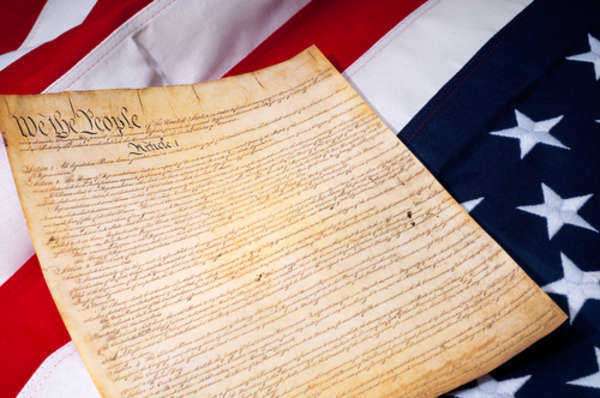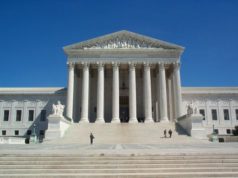
The Fourteenth Amendment, passed in 1868 and ratified in 1868, is one of the most important amendments to the United States Constitution. The amendment granted citizenship to all persons born or naturalized in the United States, including former slaves, and protected their rights by prohibiting states from denying “life, liberty, or property, without due process of law” and by guaranteeing equal protection under the law to all citizens. The amendment has had a significant impact on American history and civil rights, particularly in issues related to the topic of race.
One of the most significant decisions made by the Fourteenth Amendment relates to the issue of segregation and discrimination in public schools. In 1951, thirteen African American students in Topeka, Kansas were denied admission to their local elementary school due to their race. In response, their parents filed a lawsuit, Brown v. Board of Education of Topeka, Kansas, arguing that segregation in public schools violated the Equal Protection Clause of the Fourteenth Amendment. The Supreme Court agreed, ruling in 1954 that “separate educational facilities are inherently unequal” and ordering an end to segregation in public schools.
The Brown v. Board of Education decision was a landmark victory for civil rights and equality, and it has had a lasting impact on issues related to race in America. While schools were the primary focus of the case, the ruling shaped the broader civil rights movement and affected segregation and discrimination in other areas of society, such as housing, employment, and voting rights.
Another important decision related to the Fourteenth Amendment concerns voting rights. The Fifteenth Amendment, ratified in 1870, specifically granted the right to vote to African American men, but states still found ways to restrict their voting rights. In the 1960s, the Civil Rights Movement, led by activists such as Martin Luther King Jr., fought for broader voting rights and an end to discriminatory practices such as literacy tests and poll taxes.
The Fourteenth Amendment played a crucial role in these efforts. It was the basis for the 1964 Voting Rights Act, which abolished many discriminatory voting practices and ensured that all Americans had equal access to the ballot box. The act was a major victory for civil rights and helped to secure more equal representation for African Americans and other minority groups.
The Fourteenth Amendment has also been the basis for many legal challenges to discriminatory practices in housing. The Fair Housing Act, passed in 1968, prohibited discriminatory housing practices such as refusing to sell or rent to people based on their race or ethnicity. The act was modeled on the Fourteenth Amendment and is seen as an extension of the civil rights movement to housing issues.
More recently, the Fourteenth Amendment has been used to argue for marriage equality for same-sex couples. In 2015, the Supreme Court ruled in Obergefell v. Hodges that same-sex couples had the right to marry under the Equal Protection Clause of the Fourteenth Amendment. The decision was a milestone for the LGBTQ+ community and marked a major step forward in the fight for equal rights.
The Fourteenth Amendment has also been invoked in cases related to immigration and immigrant rights. In Plyler v. Doe, the Supreme Court ruled in 1982 that all children, regardless of their immigration status, had a right to a public education. This decision was based on the Equal Protection Clause of the Fourteenth Amendment and helped to ensure that immigrant children were not excluded from schools due to their status.
These cases and decisions are just a few examples of the Fourteenth Amendment’s impact on American history and civil rights. The amendment has been the basis for countless legal challenges and has helped to shape the course of American history in significant ways. While there is still work to be done to ensure that all Americans have access to equal rights and protections, the Fourteenth Amendment remains a key foundation for the fight for civil rights and equality in America.
The Fourteenth Amendment was passed in July 1868 and is one of the so-called Reconstruction Amendments, also including the Thirteenth and Fifteenth, through which Congress enabled its program of rebuilding and reform directed toward the former Confederate states in the wake of the Civil War.
A primary purpose of the Fourteenth Amendment was to Constitutionally establish the illegality of slavery, to which end it expanded the definition of citizenship. The Supreme Court decision in the case of Dred Scott v. Stanford, which prohibited citizenship for slaves or their descendants, was thus struck down. The Fourteenth Amendment was also intended to guard against any future decision by the Supreme Court to strike down the Civil Rights Act of 1866, the previous Congressional measure for the expanded availability of citizenship.
The Fourteenth Amendment consists of five sections, the first being the most relevant to the interpretation of citizenship and rights issues by the Supreme Court. The language of this section provides the American legal system with the Citizenship Clause, the Due Process Clause, and the Equal Protection Clause. The first specifies as subjects for citizenship “all persons born or naturalized in the United States”, the second to the inability of states to “make or enforce any law which shall abridge” citizens’ rights without “due process”, and the third to the inability of states to deny anyone “equal protection of the laws”. Supreme Court decisions on purported violations of rights thus often draw on the Fourteenth Amendment.
During the early 20th Century, the Supreme Court chose to interpret the Due Process Clause, to the minds of some observers against its original purpose, as guarding against the ability to regulate private contracts, as in Lochner v. New York in 1905. The Lochner case disallowed limits on the hours which could be required of workers. This reading of the Due Process Clause subsided in the Depression Era of increased Government intervention in the economy. In the 1937 case of West Coast Hotel v. Parrish, the Court reversed its general view of the Due Process Clause as being applicable to employment contracts.
In interpreting the Fourteenth Amendment, the Supreme Court has repeatedly made use of the “Incorporation Doctrine”. This principle holds that the First, Fourth, and Sixth Amendments are entirely, and the Fifth and Eighth Amendments are partly, incorporated by the Due Process Clause of the Fourteenth Amendment. The basic purpose of it is to require states to observe the rights granted by the Bill of Rights, which had been previously limited by the doctrine of states’ rights.
The Supreme Court allowed for a wide interpretation of the Equal Protection Clause in the first decades following the Fourteenth Amendment’s passage, but began to limit the provision’s applicability with the 1896 decision in the case of Plessy v. Ferguson in favor of the “separate but equal” argument for allowing segregated facilities. The Court eventually reversed itself on this decision with its finding in the case Brown v. Board of Education, which provided the impetus for the Court’s newly broadened applications of the protections toward various groups.


























